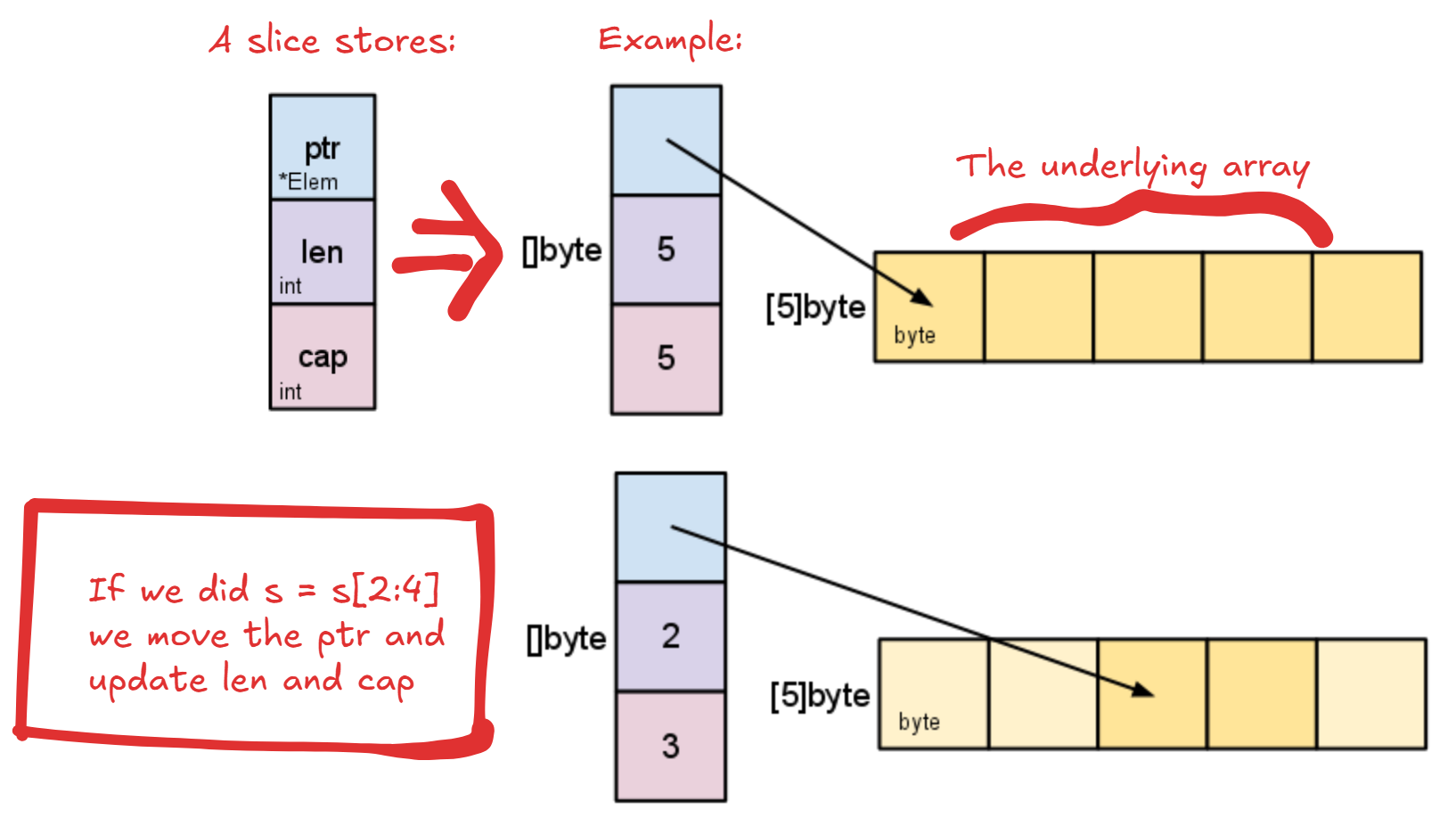Golang
Array vs. Slices
One distinction that confused me with Go is the difference between an array and a slice. An array is strictly [n]T of fixed length n and type T and cannot be resized. For example:
var a [3]int
Is an array. The length is part of its type, so it must be known at compile time, not at runtime! The type [4]int is different from type [5]int because they differ in length. I made the mistake of thinking something like [dx]int is an array, but since dx is not known during compilation, this is actually invalid syntax. Once an array is defined all the space is allocated. An array can be useful if you know it is going to be a certain size at compile time, but most of the time it is not the case, hence why in most cases you use dynamically sized slices.
Go Array Design
One interesting choice that makes Go different from C is that all arrays are zero-initialized. So arrays of numbers all contain 0 at initialization, booleans all contain false and strings are "". This was to avoid error prone bugs.
Also unlike C, Go arrays are not pointers to the first element, but represent the entire array, so passing it around copies the arrays contents (you can still do &arr to get the pointer though). An array in Go is kind of like a struct with indices instead of named fields.
It's possible to also have compiler count the elements in the array literal for you:
// this will be type [2]string
b := [...]string{"Penn", "Teller"}
So What is a Slice?
A slice is a powerful abstraction on top of Go's arrays. A slice is a dynamic window into an underlying array and is denoted by the type []T for a slice of type T. The slice does not store any data, just points to an underlying array. If you change elements in a slice, the underlying array elements are changed. It can be created one of two ways: via make or via declaring the []int slicing syntax.
For instance, if you already have a pre-existing array like primes := [6]int{...} then primes[1:2] gets you a slice.
To dynamically allocate zeroed arrays and get the corresponding slice, use make:
s := make([]int, 5) // length 5
You can also use a slice literal which creates an array literal and builds a slice that references it:
[]bool{true, false, true}
A slice has length and capacity which can be obtained through len() and cap(). The length is the length of the slice while capacity is the number of elements in the underlying array (from beginning of slice to end of array, so if your slice begins at index 2 in size 6 array, the capacity is 4). A slice is resizable, so you can use append to grow the slice.
var s []int
// append one element
s = append(s, 2)
// append multiple elements
s = append(s, 2, 3, 4)
Slice Under the Hood
Really the slice is just made up of bytes that contain a pointer to the underlying array element, a length int and a cap int.
